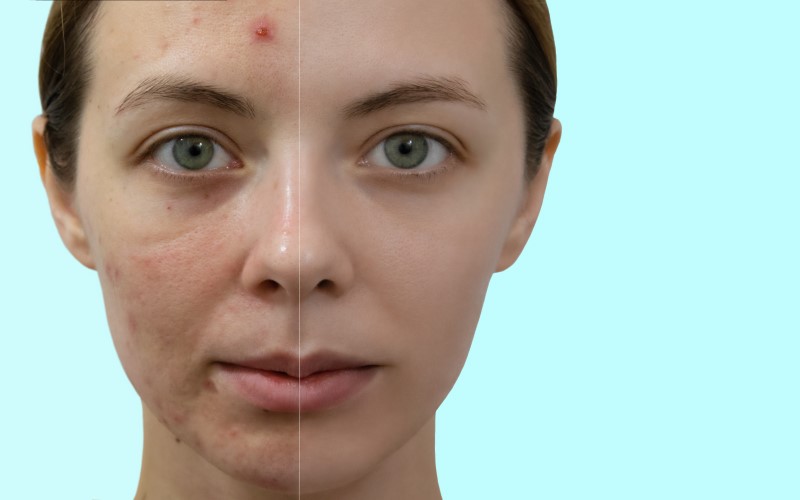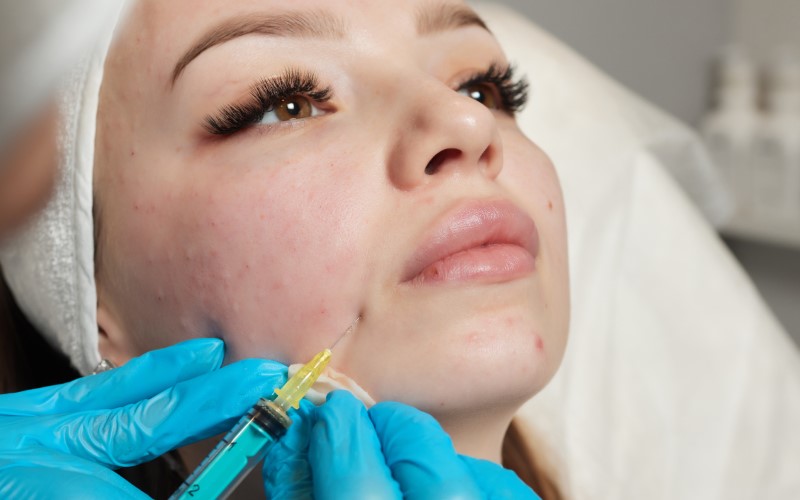Exploring the Healing Journey: How Long Do Acne Scars Take to Heal
Feb 11, 2024 By Madison Evans
Acne scars can linger long after blemishes have cleared, leaving many wondering about the healing time for acne scars. Understanding this process is key to managing expectations and choosing the right treatments. Let's delve into the journey of acne scars, exploring factors influencing healing and effective strategies for achieving smoother skin.
When it comes to acne scars, patience is crucial. The healing time for acne scars varies widely depending on several factors, including the type and severity of the scars, individual skin characteristics, and the chosen treatment approach. While there's no one-size-fits-all answer, gaining insights into the healing process can help navigate the journey toward clearer skin.
Factors Influencing Healing Time
Various factors influence the healing time for acne scars, each contributing to the duration and efficacy of the recovery process. Understanding these factors is essential for managing expectations and choosing appropriate treatment options.
Type of Scarring
Different types of acne scars, such as atrophic, hypertrophic, or keloid scars, may require distinct treatment approaches and exhibit varying healing times. Each type of scar presents unique characteristics that influence the choice of treatment and the duration of the healing process.
Severity of Scarring
The severity of acne scars significantly impacts the time required for them to fade. Deeper scars, resulting from more severe inflammatory acne lesions, typically take longer to heal than superficial scars. The extent of tissue damage and the scars' depth contribute to the healing process's complexity.
Skin Type Variations
Individuals with different skin types may experience variations in healing time due to skin tone, texture, and sensitivity. These unique skin characteristics influence treatments' effectiveness and the scar improvement rate. Understanding one's skin type is crucial for selecting appropriate treatment modalities and managing expectations during healing.
Role of Treatment Methods
The chosen treatment method plays a significant role in determining the healing timeline for acne scars. Various treatment options are available, from topical creams and laser therapy to chemical peels and microdermabrasion, each with advantages and associated healing times. Selecting the most suitable treatment approach in consultation with a dermatologist is essential for optimizing scar improvement and achieving desired outcomes.
Understanding the Healing Process
By now, you have explored the key factors influencing the overall healing time for scars; let's now delve into the healing process. The healing process for acne scars typically involves several stages:
Inflammation:
The initial response of the body to acne lesions involves triggering inflammation. While inflammation aids in eliminating bacteria and repairing damaged tissue, it can also contribute to scarring if not properly managed. Controlling inflammation through appropriate skincare and treatment interventions is crucial for minimizing the risk of scar formation.
Tissue Repair:
During the tissue repair stage, specialized cells repair damaged skin by synthesizing collagen. Collagen plays a key role in filling in depressions and smoothing out scars. Adequate collagen production is essential for restoring the integrity of the skin and improving the appearance of acne scars.
Remodeling:
As the healing progresses, the newly formed collagen undergoes remodeling, marking the final stage of scar improvement. Over time, the skin's texture and appearance gradually improve as the collagen fibers realign and mature. This phase can extend over several months to years, depending on the extent of scarring and the body's inherent healing ability. Patience and consistency are paramount during this period, as visible results may take time to manifest.
Managing Expectations
While the healing time for acne scars can vary, setting realistic expectations is important. Complete scar removal may not always be possible, but significant improvement is achievable with the right approach and patience.
Here are some tips for managing expectations during the healing process:
- Be Patient: Achieving visible results takes time, so be patient and consistent with your chosen treatments.
- Follow Treatment Recommendations: Stick to your dermatologist's recommendations and treatment plan to optimize results and minimize the risk of complications.
- Protect Your Skin: Practice sun protection and avoid picking or squeezing acne lesions, which can worsen scarring and prolong healing.
- Consider Combination Therapies: In some cases, combining different treatments may yield better results than relying on a single approach.

Effective Treatments for Acne Scars
Several treatments can help improve the appearance of acne scars and expedite the healing process. However, considering multiple factors helps dermatologists suggest the best treatment for acne scars. Some of the most effective treatments for acne scars include:
Topical Treatments: Creams available without a prescription, as well as those prescribed by a healthcare professional, that include retinoids, vitamin C, and alpha hydroxy acids, have the potential to stimulate skin renewal and boost collagen production. This, in turn, can result in a smoother complexion.
Laser Therapy: Laser treatments, like intense pulsed light (IPL) therapy and fractional laser resurfacing, can target specific layers of the skin to stimulate collagen production and reduce the appearance of acne scars.
Chemical Peels: Chemical peels involve the application of a chemical solution to the skin, which exfoliates the outer layers and promotes cell turnover. This can help improve the texture and tone of the skin, including acne scars.
Microneedling: Microneedling involves using a device with fine needles to create micro-injuries in the skin, stimulating collagen production and improving the appearance of acne scars over time.

Conclusion
Understanding the healing time for acne scars is essential for anyone seeking smoother, clearer skin. While the journey to scar-free skin may take time and patience, effective treatments are available to expedite the healing process and minimize the visibility of acne scars.
Individuals can take proactive steps toward achieving their skincare goals by addressing factors influencing healing time and exploring various treatment options. Remember, consistency and commitment are key to healthier, more radiant skin.








